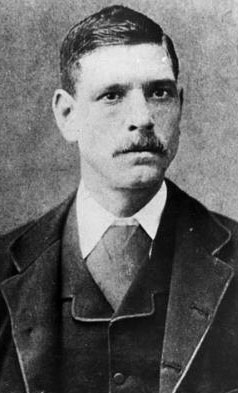Strengthening of the Labour movement
Syndicalism received more attention than support, not only in the TUC, but in the South Wales Miners’ Federation (SWMF) as well. It was not, however, completely rejected. Many of its elements could be found in statements of trade union leaders. Many were dissatisfied with the weakness of the trade union movement as a whole, the ineffectiveness of the TUC and the Labour Party. The proposals, however, to strengthen or increase the unity in the labour movement were not quite successful. At the 1910 Trades Union Congress, for instance, it was proposed to restructure the TUC into a National Federation of all trades, with a view to the possibility of determining all industrial agreements on a given date for each year. TUC tested, sought the reaction of the affiliated unions, and did not find a majority. Slightly more successful was a resolution at the same Congress, that proposed an amalgamation of unions "by industry”; slightly more successful, because it did not bring about a complete restructuring of the trade union movement, and the Parliamentary Committee of the TUC only rendered its services to the unions, that wanted to amalgamate.
Resolutions to increase the unity in the labour movement, in the form of an amalgamation of the TUC, the Labour Party and the General Federation of Trade Unions (GFTU), or in the form of a Labour Congress, or in any other form, were yearly discussed at the annual Congress in the years before and during the First World. Since they all failed - many small craft unions put their history, tradition and vested interests before the interest of the trade union movement in general, and those of the less skilled workers in particular - it was up to the individual unions themselves to strengthen their organisation.
The most notable successes of the advocates of amalgamation and industrial unionism ware the formation of the National Transport Workers’ Federation in 1911, and of the National Union of Railwaymen in 1913. The NTWF brought together the leaders of the 1889 'Dockers’ Strike - Tom Mann, Will Thorne and Ben Tillett - again. It was Tom Mann, who encouraged Ben Tillett - leader of the Dock, Wharf, Riverside, and General Workers’ Union - to form the NTWF. Mann, however, was the only syndicalist among the union leaders involved. The others - even Tillett - were more interested in a stronger trade union organisation, and they did not accept the syndicalist’ contempt for parliamentary institutions. Thorne, for instance, wrote in his report to the 1912 Gasworkers’ Congress:
 My old colleague, Tom Mann, is now trying to persuade the
wage earners not to have anything to do with Parliamentary action.
I have always "been in favour of direct action on Trade Union
lines, because the immediate grievances of the wage earners can be
dealt with, but at the same time I am not prepared to allow the
employing classes to keep and have control over the political
machinery; the combined forces of Labour, and the political
working-class movement, marching forward together, can, in my
opinion, do a great deal more for the wage earners of the country
than can be done if we only concentrate our energies to direct
action.
My old colleague, Tom Mann, is now trying to persuade the
wage earners not to have anything to do with Parliamentary action.
I have always "been in favour of direct action on Trade Union
lines, because the immediate grievances of the wage earners can be
dealt with, but at the same time I am not prepared to allow the
employing classes to keep and have control over the political
machinery; the combined forces of Labour, and the political
working-class movement, marching forward together, can, in my
opinion, do a great deal more for the wage earners of the country
than can be done if we only concentrate our energies to direct
action.
The formation of the NUR was also an attempt to strengthen the power of the employees in the railway industry, and not an implementation of syndicalist ideas. Sectionalism had become, they argued, obsolete. It retarded the achievement of a monopoly power of Labour in any industry, and rendered impracticable the power of those within the industry to control the industry. The NUR tried to achieve a monopoly of labour power by the enrollment of all railway workers in one union, but did not succeed, for the footplate rnen and the railway clerks remained outside the NUR.
The MFGB has almost always been an industrial union, Though there were many small craft unions in the mining industry, the NFGB organised the great majority of the miners. As mentioned above, the impact of syndicalism was the greatest in the NFGB, especially in South Wales. At the 1912 NFGB’s Annual Conference Robert Smillie, the president of the NFGB, declared himself against syndicalism. He did not think, however, that the power for good of the trade union movement was finished. On the contrary, he argued, the power to improve the conditions of the people by trades union effort was only starting. Syndicalism, however, was not the answer, but a closer connection of all trade unions together. He regretted the disruption that was caused by the Miners’Next Step - although he did not mention it by name. He believed that any movement of this kind, which would break up local organisations and divide them into different sections, was not healthy for the general trade union movement. It did not tend in the direction of the solidarity of the movement.
